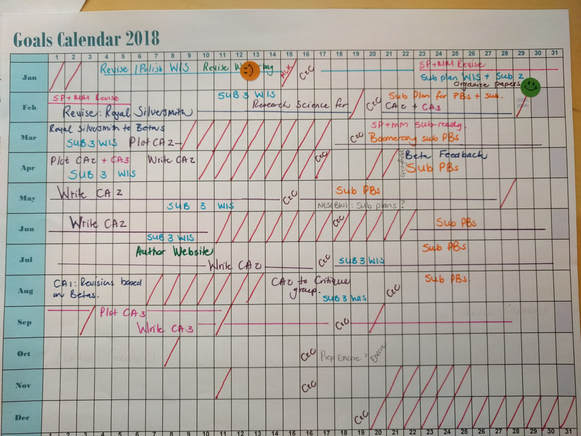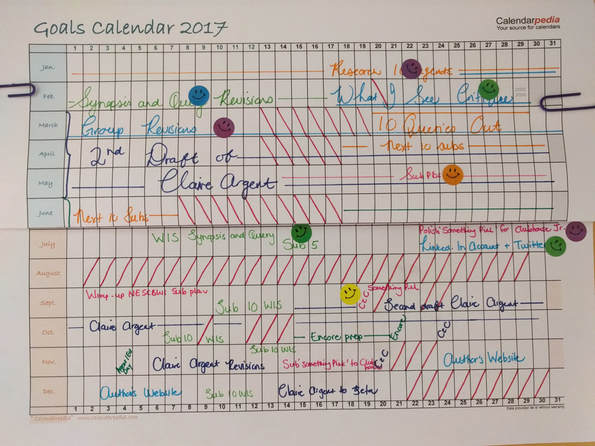 ~ by Amanda Smith This sparkly, brand-spanking-new year is just begging for some bright, shimmery writing goals. With goals we will soar. We will fly! We will publish all our lovely books! We will crash and burn if we neglect to take a moment to root our new goals in our current progress. For success it is paramount to build a bridge between last year’s product and this year’s dream. How do we construct this bridge? St Francis of Assisi said, "Start by doing what is necessary, then do what is possible, and suddenly you are doing the impossible.” Ask yourself, from where you are right now, what is necessary to move forward. Towards the end of December, I pulled out my yearly goals and checked off the tasks accomplished. I reflected on what worked, and what didn’t. I took a moment to acknowledge and celebrate the big-ticket items – a novel revised, a synopsis written, a second draft of a new novel completed. I contemplated the items that didn’t get checked off. What will these projects look like in the new year? Are they still a priority? Asking these questions helped me determine what is necessary for me to move forward. These immediate tasks include final revisions on a YA novel; deep revisions, even possible rewrites on two picture book manuscripts after input from critique groups; and revisions on a middle grade manuscript. Once I have finished these tasks, what will be possible? What is the practical next step? I could submit the picture books and the YA novel. So, another goal is to come up with submission plans for those manuscripts.  Then there is the dream, the challenge: What is the one thing you want to accomplish this year, but the sheer thought of it scares you to death? What is the impossible? Make that a goal. Mine is to plot and write the remaining two books in a middle grade trilogy. Yup, my boots are shaking. Now that you have dreamed necessary, practical and are-you-kidding-me?, it’s time to fit those goals into the year. I use a goals calendar.
Don’t forget to reward yourself with proper, meaningful carrots along the way! Yes, we will soar. We will fly! And we will do the impossible.
3 Comments
1/15/2018 09:09:40 pm
Thanks for the goal-setting kick in the pants! I needed it.
Reply
1/13/2019 09:49:20 pm
Thank you, Amanda! I needed to have something all in one place, and your calendar is perfect. I'm always forgetting about a manuscript or two, so I think this is really going to help me set and reach my goals for this year.
Reply
Amanda Smith
1/14/2019 11:07:32 am
I'm glad you found this useful, Lisa. Wishing you writing success for 2019!
Reply
Leave a Reply. |
Peruse blogs for advice and tips from KidLit creatives.
Categories
All
Archives
April 2024
Click to set custom HTML
Click on the RSS Feed button above to receive notifications of new posts on this blog.
|
||||||



 RSS Feed
RSS Feed